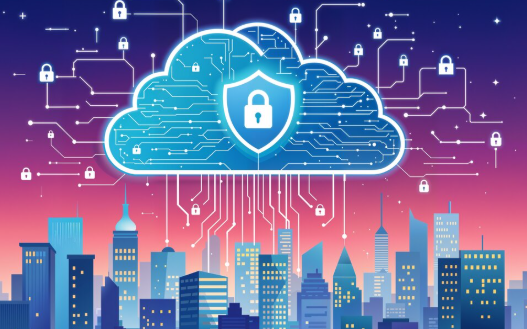In today’s hyper-connected digital landscape, the need to stay one step ahead of cyber threats is more critical than ever. Cyber threats are becoming more sophisticated and frequent than ever before. Cybersecurity breaches can result in devastating consequences for individuals, organizations, and even entire nations. This is where real-time threat detection and response come into play. In our rapidly evolving technological world, it’s not enough to merely build a fortress around your data; you must actively patrol its borders and swiftly counter any potential threats.
At the recent Gartner Security & Risk Management Summit held on March 28-29, 2023 in Sydney, key insights into the future of cybersecurity emerged. These include the revelation that half of Chief Information Security Officers (CISOs) plan to embrace human-centric design as a means to mitigate cybersecurity operational challenges. Interestingly, it was also revealed that approximately half of cybersecurity leaders will have encountered great difficulties when attempting to utilize cyber risk quantification as a tool for influencing enterprise decision-making. *
How severely a cyber attack can impact an organization?
Cyberattacks can significantly disrupt an organization, causing financial losses from fund theft, ransom payments, legal fees, and recovery costs. They can also damage an organization’s reputation, erode customer trust, disrupt daily operations, lead to downtime and productivity losses, and result in the loss or theft of sensitive data, which can be catastrophic for data-dependent decision-making.
How to detect cyber threats?
Timely threat detection allows for swift response, minimizing potential damage, financial losses, and operational disruptions. In a rapidly evolving cyber landscape, proactive threat detection is the first line of defense in preventing costly breaches and ensuring business continuity.
- Network Monitoring: Implement robust network monitoring tools and intrusion detection systems (IDS) to constantly analyze network traffic for unusual patterns or anomalies. Unusual traffic spikes, unauthorized access attempts, or suspicious data transfers can be early signs of a cyber threat.
- Endpoint Security: Employ advanced endpoint security solutions that protect personal devices from malware, ransomware, and other malicious software. EDR can help identify and respond to threats on individual devices.
- User Behavior Analytics (UBA): These systems can identify deviations from normal behavior, such as unauthorized access attempts or unusual data access patterns, which may indicate a breach.
- Threat Intelligence Feeds: Subscribe to threat intelligence feeds to stay updated on the latest cyber threats and attack techniques- can help to proactively detect and defend against emerging threats.
- Security Information and Event Management (SIEM): Implement SIEM solutions to centralize log data from various sources. SIEM platforms can correlate and analyze this data in real-time to identify potential security incidents, making it easier to detect threats.
How to respond to cyber threats, immediately?
Responding to cyber threats involves these key steps: Activate an incident response plan, isolate affected systems, conduct forensic analysis, communicate with stakeholders, and remediate vulnerabilities. Swift, organized responses are crucial for minimizing damage and protecting your organization.
- Incident Response Plan: Develop a comprehensive incident response plan outlining roles, responsibilities, and procedures to follow in the event of a cyber threat. This plan should include steps for containment, eradication, and recovery.
- Isolation and Containment: Quickly isolate affected systems or networks to prevent the threat from spreading further. Segmentation and network controls can help contain the threat, limiting its impact.
- Forensic Analysis: Conduct a thorough forensic analysis to understand the nature and scope of the attack. Preserve evidence for potential legal action and improve defenses against future threats.
- Communication and Notification: Notify relevant stakeholders, including law enforcement, customers, and regulatory authorities, if necessary. Open and honest communication is vital for maintaining trust and compliance.
- Patch and Remediate: Identify and address vulnerabilities and weaknesses that allowed the threat to succeed. Update and patch systems, enhance security controls, and implement lessons learned to prevent future incidents.
Effective cyber security measures:
- Managed Detection and Response (MDR) is a comprehensive cybersecurity solution that combines proactive threat detection and real-time security intelligence. MDR services continuously monitor your organization’s network and endpoints, seeking out potential threats. By analyzing data from various sources, patterns, and anomalies are identified to create rules and policies for early threat prevention.
- Firewalls and Intrusion Detection/Prevention Systems (IDPS): Implementing robust firewalls and IDPS helps filter incoming and outgoing network traffic.
- Regular Patch Management: Keep software, operating systems, and applications up to date. Unpatched vulnerabilities are a common target for cybercriminals. Regularly applying patches ensures that known security weaknesses are addressed promptly.
- Employee Training and Awareness: Educating employees about cybersecurity best practices and the importance of avoiding phishing scams and social engineering tactics is crucial
- Multi-Factor Authentication (MFA): Enforcing MFA adds an extra layer of security by requiring users to provide multiple forms of authentication. Even if a password is compromised, an additional verification method is needed to access sensitive data.
- Data Encryption: Employ strong encryption for data at rest and in transit. Encryption ensures that even if data is intercepted, it remains unreadable without the appropriate decryption keys.
- Backup and Recovery: Having a backup and recovery system in place can help organizations recover quickly from cyber-attacks, restore lost data, and minimize damage to the organization.
A proactive and well-prepared organization is better equipped to defend against future cyberattacks.
CONCLUSION
To gain a competitive edge and ensure uninterrupted growth in the face of cyber threats, organizations can harness the power of Managed Detection and Response (MDR) with STL Digital’s innovative approach. This methodology encompasses proactive defense techniques and real-time security intelligence, offering numerous advantages. Proactive defense techniques empower enterprises to proactively identify and thwart potential threats before they can inflict harm. By collating data from diverse sources and subjecting it to rigorous analysis, patterns and anomalies are pinpointed. This invaluable insight informs the creation of rules and policies aimed at identifying and preventing cyberattacks. Consequently, businesses can markedly reduce their exposure to potential threats. STL Digital’s approach further bolsters security through real-time security intelligence. Leveraging advanced analytics, including machine learning and artificial intelligence, data is scrutinized to uncover potential threats, including unknown or unnoticed patterns.
Defend your business from digital threats! Cybersecurity isn’t a choice; it’s a lifeline. Shield your assets, data, and brand with STL Digital’s expert solutions. The future belongs to the secure. Take the reins of your destiny, and secure your success today.
Embrace cybersecurity and fortify your future with STL Digital.



